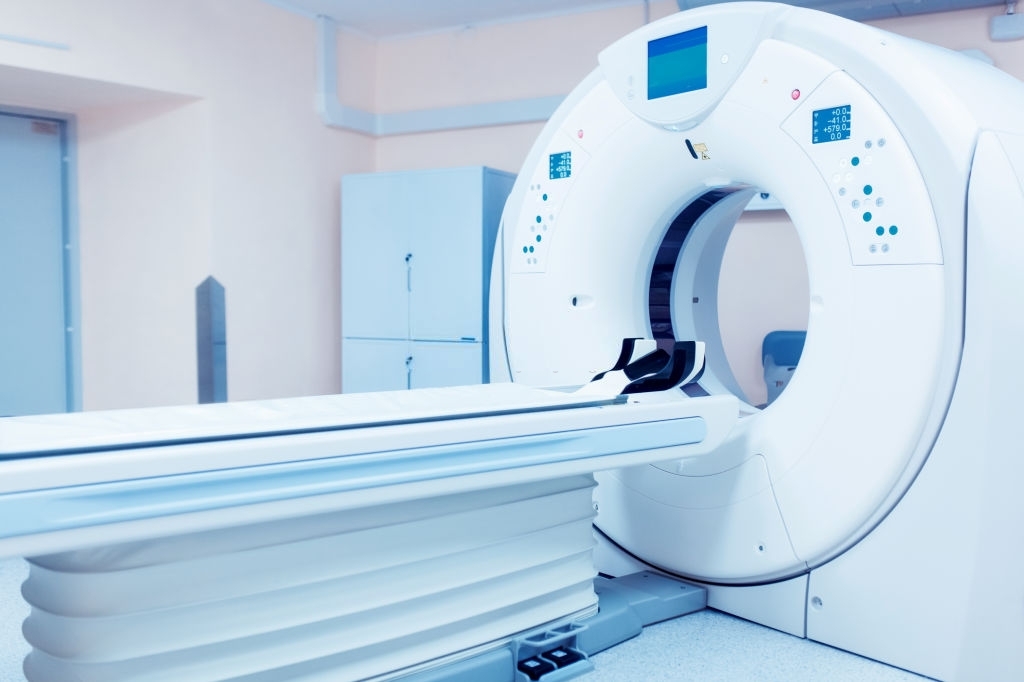Computed Tomography (CT)
An ordinary X-ray scan is a two dimensional picture of a three dimensional body. Internal structures are visible, but all the structures from different depths are superimposed, as if the body had been "flattened" to fit on the picture. Depth information is lost and the outlines of objects are simply superimposed.
Tomography is a technique for constructing images of the structures at a particular depth within the body - as if through a "slice" at a particular level within the body. This is done by taking several x-ray images at different angles and then using a computer to analyze these images and produce a reconstruction that only includes structures visible at a certain level or "slice". This process is known as computed tomography (CT).
An older term is computerized axial tomography (CAT), which refers to the fact that images were originally only taken in the axial plane; this is no longer the case.

CT produces higher-resolution images than MRI
CT images identify intracranial tumors and other brain lesions as areas of altered density. Bone, the densest tissue, appears white; soft tissue and brain matter appears as shades of gray; cerebrospinal fluid - the least dense - appears black. Normally, the cerebral blood vessels don't appear on CT images. Magnetic resonance imaging (MRI) is the preferred procedure for imaging cerebral blood vessels.
However, because the high density of blood contrasts markedly with low-density brain tissue, bleeding (e.g a ruptured aneurysm) is very easy to detect via CT scan. CT also produces higher-resolution images than MRI, although the contrast is less. To improve contrast on the CT scan, patients often receive injection of a medium such as iodine, which is opaque to x-rays, and thus sharpens the picture obtained.
Further reading: Illustrated Guide to Diagnostic Tests, 2nd edition. Springhouse Corporation, Springhouse PA, 1998 - by Catherine E. Myers. Copyright © 2006 Memory Loss and the Brain
Digital Imagery © copyright 2000 PhotoDisc, Inc.



